img {
margin-right:10px;
margin-top:10px;
margin-bottom:10px;
}
Wellington Airport’s runway extension faces another legal challenge, on safety grounds
by Gordon Campbell, October 19, 2016. Link here.
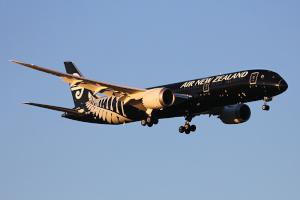 If the $300 million runway addition planned for Wellington Airport proceeds, it will have a major impact on the marine environment at both ends of the 355 metre extension, and particularly so at the Cook Strait end. Besides the permanent effect on tidal patterns along the south coast, people living adjacent to the airport will be affected by the noise, dust and truck movements during the construction phase of the project. A few weeks ago, these and other aspects of the runway extension were canvassed within Wellington Regional Council reports that were released right on the eve of the recent local body elections.
If the $300 million runway addition planned for Wellington Airport proceeds, it will have a major impact on the marine environment at both ends of the 355 metre extension, and particularly so at the Cook Strait end. Besides the permanent effect on tidal patterns along the south coast, people living adjacent to the airport will be affected by the noise, dust and truck movements during the construction phase of the project. A few weeks ago, these and other aspects of the runway extension were canvassed within Wellington Regional Council reports that were released right on the eve of the recent local body elections.
The suggested steps to mitigate the effects – around Moa Point for instance – will inevitably add to the cost of the runway extension, although by how much will depend on what mitigation steps are eventually deemed to be essential by the Environment Court, which will rule on the environmental consent application in early 2017.
Wellington Airport is two thirds owned by the NZX listed company Infratil, and the remaining third is owned by Wellington City Council. Infratil is proposing to meet one third (ie, $100 million) of the runway extension costs, with central government picking up another third, and Wellington City Council the remaining third. In Infratil’s opinion, the bulk of the runway extension costs should come from taxpayers and ratepayers because, in its view, most of the benefits will accrue to the country and to local region rather than to the airport owners – who would otherwise be unable to justify the runway expansion costs on commercial grounds.
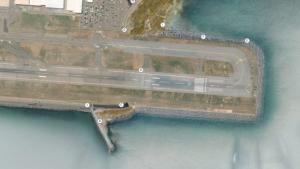 Obviously, the $300 million estimate is a pre-mitigation figure. In September when Scoop queried Infratil CEO Tim Brown about the accuracy of the $300 million estimate, Brown stuck by that amount, but only conditionally :
Obviously, the $300 million estimate is a pre-mitigation figure. In September when Scoop queried Infratil CEO Tim Brown about the accuracy of the $300 million estimate, Brown stuck by that amount, but only conditionally :
‘A lot of research has gone into that figure. We believe its going to be quite accurate…but what will happen at the end of this, of course, is that if we get the [environmental] consents, we’ll get the consents with who knows what conditions. So those conditions could add additional costs. [For now] its an accurate cost of what the extension will cost before any embellishments.’
Some of the environmental impacts will be only transitional during the construction phase, yet others will permanently affect the wave patterns and marine eco-system. In addition, the runway extension project has been controversial on at least two other fronts :
(a) the safety of the extension design, which will be tested in the Court of Appeal in a few days time and
(b) the net benefits likely to accrue from the injection of ratepayer and taxpayer funds.
This year, runway advocates and their critics have sharply disagreed over the credible increase in passenger traffic (inwards and outwards) that the extension would be likely to generate, and the net flow-on value to the Wellington region, and national economy. Scoop will analyse these financial arguments in a separate article. This article will address only the safety issues, which will be argued before the Court of Appeal on Thursday, October 20.
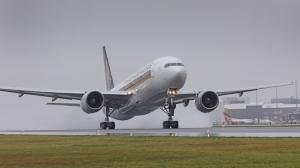 Safety First
Safety First
The safety-related legal challenge revolves around the size of the 90 metre long Runway End Safety Area (RESA) being proposed for the runway extension. Basically, the RESA is the safety zone required if and when planes ‘run off’ the runway proper and need to decelerate safely, in the event of an emergency, or because of a runway undershoot or overshoot. A 90 metre RESA at each end is the minimum requirement under the international aviation standards, but is less than the 240 metre zone distance recommended – whenever this is ‘practicable’ – under the rules set by the International Civil Aviation Organisation (ICAO). In July, the High Court rejected a challenge mounted by the Airline Pilots Association (ALPA) against the decision by the Director of the Civil Aviation Authority (CAA) to allow only a 90 metre RESA for the runway extension.
That CAA approval of a 90 metre RESA for Wellington is important in itself. It will also create a precedent for Queenstown airport as well. Or for any other New Zealand destination seeking an increase in long haul international aircraft, in a context where the geographical terrain makes it costly for the ‘best practice’ safety standards to be met.
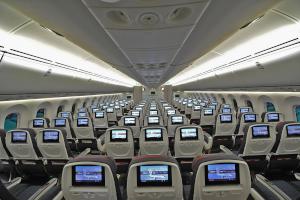 As will be explained below, the pilots’ union challenge rejected by the High Court in July had two main elements., Firstly, ALPA contended that the CAA should have required the longer RESA recommended by the ICAO, rather than the 90 metre one endorsed by the CAA Director. The wording of the relevant Part 139 of the Civil Aviation regulations states: “A RESA must extend to a distance of at least 90 metres and, if practicable to a distance of at least 240 metres from the end of the runway strip.” In the High Court, a lot of freight got heaped onto that key word “practicable.”
As will be explained below, the pilots’ union challenge rejected by the High Court in July had two main elements., Firstly, ALPA contended that the CAA should have required the longer RESA recommended by the ICAO, rather than the 90 metre one endorsed by the CAA Director. The wording of the relevant Part 139 of the Civil Aviation regulations states: “A RESA must extend to a distance of at least 90 metres and, if practicable to a distance of at least 240 metres from the end of the runway strip.” In the High Court, a lot of freight got heaped onto that key word “practicable.”
Secondly, and by way of a possible compromise, the pilots union proposed to accept a shorter RESA distance if an artificial buffer zone called an EMAS (for Engineered Materials Arrestor System) was installed in Wellington, of sufficient quality as to create, in effect, a 240 metre RESA safety zone. Basically, an EMAS is made of crushable materials into which the plane wheels can sink, thereby bringing an overshooting (or undershooting) aircraft safely to a halt. One telling sign of the difference between a 90 metre RESA and a 240 metre RESA in safety terms? Reportedly, a 90 metre RESA will capture only around 60% of overruns. By comparison, a 240 metre one will capture over 90%.
The legal battle is over the tension between what the relevant aviation rules require, and what they recommend, given that the ICAO rules and New Zealand regulations allow for an unspecified degree of discretion, which was duly exercised by the CAA Director in greenlighting the 90 metre RESA length. As mentioned, many of the legal arguments turned on how far the notion of what is “practicable” should have been pursued by the CAA, and to what degree safety recommendations should be weighed against the cost of compliance, given what is known of the risks involved. Is it desirable for best safety practices to be traded off against what is “practicably” affordable – in a context where many bigger, heavier and faster landing aircraft on long haul flights (ie laden with jet fuel) will be flying into the notoriously weather-challenged Wellington International Airport in future? After Pike River, many New Zealanders would probably have expected the authorities to err on the side of caution, on matters of health and safety. Not this time, not so far.
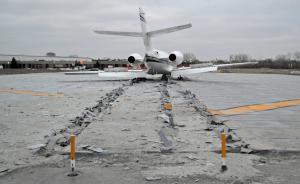 So far, surprisingly little consideration appears to have been given – in the High Court or media coverage – to the cost of the EMAS compromise proposal that ALPA have put on the table. This does seem odd, given that concept what is, or isn’t practicable/affordable has played such a prominent role in the legal wrangling to date. In the US, the Federal Aviation Administration (FAA) is the counterpart of our own Civil Aviation Authority. To comply with FAA regulations issued in accordance with a ten year phase-in plan contained in a 2005 Congressional vote, hundreds of US airports have been required to create either a 240 to 300 metre RESA, or to install an equivalent EMAS arrestor system, by December 31, 2015. Here’s a February 2016 FAA fact sheet advocating the practical utility of EMAS.
So far, surprisingly little consideration appears to have been given – in the High Court or media coverage – to the cost of the EMAS compromise proposal that ALPA have put on the table. This does seem odd, given that concept what is, or isn’t practicable/affordable has played such a prominent role in the legal wrangling to date. In the US, the Federal Aviation Administration (FAA) is the counterpart of our own Civil Aviation Authority. To comply with FAA regulations issued in accordance with a ten year phase-in plan contained in a 2005 Congressional vote, hundreds of US airports have been required to create either a 240 to 300 metre RESA, or to install an equivalent EMAS arrestor system, by December 31, 2015. Here’s a February 2016 FAA fact sheet advocating the practical utility of EMAS.
And here’s a 2015 update on the RESA and EMAS upgrades being pursued by the ICAO and FAA.
Evidently, the FAA regards an EMAS as providing a particularly suitable solution for locations (such as Wellington) where the available land is scarce, and very costly:
The EMAS technology improves safety benefits in cases where land is not available, or not possible to have the standard 1,000-foot overrun. A standard EMAS installation can stop an aircraft from overrunning the runway at approximately 80 miles per hour. An EMAS arrestor bed can be installed to help slow or stop an aircraft that overruns the runway, even if less than a standard RESA length is available.
For this article, Scoop has tried to establish what it would cost to install an EMAS in Wellington. First, I accessed the contract document for the recent EMAS project at San Francisco International Airport, available here.
As this contract document indicates, it cost San Francisco $US40 million for a four runway EMAS, or circa $10 million for each runway. To check this figure, Scoop also contacted Zodiac Aerospace in France, who are the main supplier of EMAS systems globally, and to almost all US airports – and asked them this question :
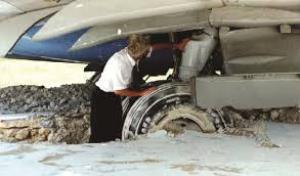 I’m looking for an approximate cost to buy, install and maintain (annually) an EMAS for an international airport scheduled to have regular services for all current regular long haul aircraft EXCEPT the Airbus A-380. The EMAS in question will be overlaid on part of a 90 metre RESA, and be of sufficient quality as to be an effective substitute for a 240-metre RESA.
I’m looking for an approximate cost to buy, install and maintain (annually) an EMAS for an international airport scheduled to have regular services for all current regular long haul aircraft EXCEPT the Airbus A-380. The EMAS in question will be overlaid on part of a 90 metre RESA, and be of sufficient quality as to be an effective substitute for a 240-metre RESA.
Todd Gressick, regional director of Zodiac Aerospace for the Asia Pacific and Latin America, replied:
‘I am going to assume you’re talking about Wellington or Queenstown. If so the prices we have provided in the past are about $7,000,000 – $9,000,000USD for the system, not including any site prep that would then make the 90m RESA equal to a 240m RESA. Annual cost to maintain the system is man hours 1-2 hours per month for inspections from the airport operations and/or maintenance departments. Annual cost for materials is around $1,000USD (seam seal, tape, adhesive, etc.) ‘
So yes, it does seem that $US10 million (ie, NZ $14.11 million) is an accurate enough ballpark estimate. Given the minimum $300 million cost of the Wellington runway extension (prior to the mitigation costs related to the environmental consent) this means that the cost of an EMAS that would render Wellington airport fully compliant with the emerging safety standards in US ( and global) aviation markets would add merely an extra 4.66% to the existing project cost estimate, with this proportion declining further, once any mitigation costs are factored in. That degree of added cost would seem very “practicable.”
 Overshoots and undershoots occur in international aviation on a regular basis. Besides the hundreds of lives that could be saved, the cost of a $10 million EMAS in Wellington ( and eventually, Queenstown) would be more than outweighed by the massive direct and reputational costs of a serious accident, and the impact on our tourism industry – which, with justification, would be deemed to have cut corners on safety. To most observers, an EMAS installation seems entirely “practicable” in the context of Part 139 of the Civil Aviation Act and Annex 14 of the ICAO regulations. Yet in July in the High Court, Judge Karen Clark [pictured left] barely considered the EMAS option as relevant to the matters before the court. In fact, she appeared unwilling to entertain why the CAA Director should even be expected to consider whether an EMAS was a ‘practicable’ (ie, affordable) solution to the safety concerns on the table. At paras 125 and 126, the Clark judgement, in effect, asked what is arguably the wrong question : where does it say that the Director needs to consider an EMAS ?
Overshoots and undershoots occur in international aviation on a regular basis. Besides the hundreds of lives that could be saved, the cost of a $10 million EMAS in Wellington ( and eventually, Queenstown) would be more than outweighed by the massive direct and reputational costs of a serious accident, and the impact on our tourism industry – which, with justification, would be deemed to have cut corners on safety. To most observers, an EMAS installation seems entirely “practicable” in the context of Part 139 of the Civil Aviation Act and Annex 14 of the ICAO regulations. Yet in July in the High Court, Judge Karen Clark [pictured left] barely considered the EMAS option as relevant to the matters before the court. In fact, she appeared unwilling to entertain why the CAA Director should even be expected to consider whether an EMAS was a ‘practicable’ (ie, affordable) solution to the safety concerns on the table. At paras 125 and 126, the Clark judgement, in effect, asked what is arguably the wrong question : where does it say that the Director needs to consider an EMAS ?
[125] For this argument to succeed NZALPA must identify the source of the obligation on the Director to consider the engineering techniques and construction options realistically available to the airport operator, including the potential for using EMAS, when assessing the practicability of a runway end safety area longer than 90 metres. Mr Rennie’s argument [for NZALPA] relied on “practicable” bearing the ordinary meaning of “actually able to be constructed”. Accordingly, the Director was bound to consider what is actually able to be constructed.
[126] In undertaking his comprehensive analysis of the proposal put to him the Director was not required to turn his mind to alternatives. Part 139 is silent as to EMAS technology. There is no requirement for EMAS to be installed and no assumption that it will be. Part 139 is dissimilar from Annex 14 which permits shortened runway end safety areas where an arresting system is installed. The focus of Part 139 is on length rather than arresting systems.
With respect, that reasoning seems odd. Apparently, because the Part 139 regulations do not specify an absolute need to consider EMAS technology (despite the mandate this technology has received from the FAA, its growing use in US airports large and small, and the need that Part 139 imposes to entertain what is “practicable” to achieve in the pursuit of safety) the High Court decided otherwise. Our CAA Director was not required to include an available, affordable and safety enhancing EMAS technology as part of his decision nexus – before he gave his blessing to a lower safety standard than what the ICAO recommends. Moreover, this example of regulatory undershooting was condoned by the High Court for a runway extension whose economic gains are being weighed out until 2060.
To repeat : if it is not “practicable” on cost grounds for Wellington International Airport Ltd to comply with the 240 metre RESA that’s increasingly the safety norm in developed countries, why is the CAA also declining to even consider the case for substituting a practical, affordable aircraft arrestor system that would, in practice, make the likes of Wellington and Queenstown compliant with the current FAA/ICAO safety recommendations ?
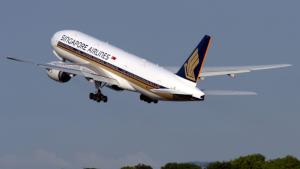 True, some countries with strong tourism sectors have managed to do even worse, and do operate below the minimum safety standards that govern international aviation. Thailand for instance, Thailand was downgraded last December by the ICAO and FAA on safety grounds. However, the safety ‘red flag’ raised over Thailand has reportedly led directly to safety improvements.
True, some countries with strong tourism sectors have managed to do even worse, and do operate below the minimum safety standards that govern international aviation. Thailand for instance, Thailand was downgraded last December by the ICAO and FAA on safety grounds. However, the safety ‘red flag’ raised over Thailand has reportedly led directly to safety improvements.
Given the emphasis that New Zealand is placing on tourism – the tourism industry is currently poised to supplant dairy as this country’s main export earner – one would have thought this country would be keen to demonstrate its compliance with aviation industry ‘best practice’ standards on safety matters, rather than trying to skate by with the minimum standards. In the July judgement on the Wellington runway extension, the High Court ruling danced around this trade-off between safety and costs. No, the Court reasoned, ALPA were quite wrong to argue that safety was being traded away for cost savings.
NZALPA criticises the cost-benefit analysis as subordinating the objective of safety to the issue of cost. The criticism is unfounded.
The High Court then proceeded to explain what it thought was really happening. Spot the difference, if you can :
The Director’s use of a cost-benefit analysis was not a subordination of safety to cost, but a process by which safety benefits could be rendered in economic terms to be understood properly alongside costs….
Oh, right. Obviously different. And in any case…regardless of what the IACO/FAA might say or recommend, the High Court felt confident that the safety concerns were being fully satisfied, merely by reaching the minimum standard :
The safety objective is integrated into the requirement for a 90 metre runway end safety area, the minimum length established by the Chicago Convention standard.
So that’s alright then. After all, if it wasn’t good enough, it wouldn’t be called the minimum, right?
 As Tim Brown of Infratil pointed out to Scoop, larger planes already use Wellington International Airport occasionally – when there’s a weather diversion, or when a regal dignitary flies into the Capital in their customised jet – without incident. As Scoop asked ALPA president Tim Robinson [pictured left], doesn’t that practice erode ALPA’s argument?
As Tim Brown of Infratil pointed out to Scoop, larger planes already use Wellington International Airport occasionally – when there’s a weather diversion, or when a regal dignitary flies into the Capital in their customised jet – without incident. As Scoop asked ALPA president Tim Robinson [pictured left], doesn’t that practice erode ALPA’s argument?
Not really. “The big difference there,” Robinson replied, “is that the airport is being used as an emergency alternate. It is used for diversions, but they’re quite a rarity. [Wellington International Airport Ltd] are talking about a regular commercial operation, involving a larger airbus A340 and Boeings which the airport do not have operating to it on a regular basis right now, but which will be part of the regular services they’re hoping to attract.”
Moreover, Robinson adds, even the new Singapore Airlines link from Singapore to Canberra to Wellington is a short hop service, using relatively small aircraft. Not long haul. “On Wellington/Canberra the fuel requirements are not as great as on a long haul direct to China or Los Angeles. If aircraft are going to be departing Wellington for those ports they are clearly going to be fully laden with passengers, and fuel. They’re going to be right at the limits of the performance capability, using the Wellington runway. Because even at its runway extension length [of 2,400 metres] that’s still relatively short for an international airport.”
 Arguably, the climatic conditions (erratic wind gusting etc) that are regularly experienced at Wellington Airport are all the more reason why the emergency runoff area for the new extension should be consistent with international best practice, and not set at the bare minimum required to operate legally. If (a) the extension gets the go ahead from the Environment Court, (b) sufficient financing from central and local government is found, and (a) Wellington eventually attracts the long haul airline traffic claimed by its advocates, this will mean that many more pilots will be landing at Wellington Airport without prior experience of the unusual challenges that this airport regularly poses. That’s another reason why erring on the side of safety would seem like a sensible path to follow.
Arguably, the climatic conditions (erratic wind gusting etc) that are regularly experienced at Wellington Airport are all the more reason why the emergency runoff area for the new extension should be consistent with international best practice, and not set at the bare minimum required to operate legally. If (a) the extension gets the go ahead from the Environment Court, (b) sufficient financing from central and local government is found, and (a) Wellington eventually attracts the long haul airline traffic claimed by its advocates, this will mean that many more pilots will be landing at Wellington Airport without prior experience of the unusual challenges that this airport regularly poses. That’s another reason why erring on the side of safety would seem like a sensible path to follow.
The alternative route – of a cost cutting aimed at getting the runway deal on the table with a price tag that central government might feel more inclined to support – not only involves playing dice with the lives of passengers and crew, but could also, in the long run, be false economics. The cost of one avoidable crash, like this overrun that occurred in Toronto on Pearson Airport’s new runway in 2005, would totally eclipse any interim savings:
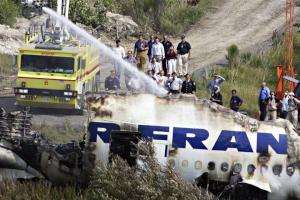 An investigation into that accident found….”the overrun area left no additional margin for error and contributed to a high casualty rate.”
An investigation into that accident found….”the overrun area left no additional margin for error and contributed to a high casualty rate.”
Air France says Transport Canada was “negligent” by not implementing the recommendations of a coroner’s inquest [into a prior] 1978 crash that urged the creation of a 300-metre safety area to give aircraft more room to stop after landing. It also charges that the airport failed to install an apron of special concrete [an EMAS] designed to quickly slow aircraft unable to stop on the runway…
Wellington may have to relearn that lesson. Make sure your seat is upright, folks, and ensure your tray table has been folded away. This landing could be rough.
Footnote : Wellington International Airport’s readiness to pursue a path of minimum safety requirements on runway length should not be seen as typical of the aviation industry in this country. The pilots and the airlines have been very safety conscious. Air New Zealand for instance, has fitted ROPS (Runway Over-Run Protection Systems) technology to its Airbus fleet, and this year, this installation has enabled night flights into Queenstown airport.
The ROPS technology – which alerts pilots when the runway length could be exceeded while landing – is briefly explained by Airbus here.
ROPS continuously monitors an aircraft’s position and calculates the distance needed to safely stop on the runway in dry and wet conditions. If the determined stopping distance is longer than the available runway length, ROPS triggers visual and oral alerts – either on final approach to landing or during the post-touchdown rollout. Operational experience has already demonstrated the system’s value on several occasions… a ROPS alert enabled A380 pilots to make a “go-around” during approach after increasing tailwinds created a potential for runway overrun. In another situation, pilots received a ROPS alert to use maximum braking and thrust reverse for a safe stop on an icy runway because the aircraft had been in a non-standard configuration after landing. In further augmenting ROPS’ capabilities, Airbus will enable pilots to input additional contaminated runway conditions (standing water or compacted snow, as examples).
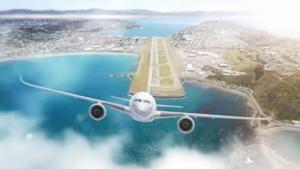 For this article, Scoop asked two questions about this evolving technology. Namely, which aircraft in Air New Zealand’s national and international fleet currently utilise ROPS technology – and which aircraft in its domestic and international Boeings fleet use the Honeywell Runway Awareness and Advisory System (RAAS) or any equivalent variant of its Enhanced Ground Proximity Warning System? “All of our domestic and international jets,” Air New Zealand replied, “have either the Honeywell EGPWS system or equivalent.”
For this article, Scoop asked two questions about this evolving technology. Namely, which aircraft in Air New Zealand’s national and international fleet currently utilise ROPS technology – and which aircraft in its domestic and international Boeings fleet use the Honeywell Runway Awareness and Advisory System (RAAS) or any equivalent variant of its Enhanced Ground Proximity Warning System? “All of our domestic and international jets,” Air New Zealand replied, “have either the Honeywell EGPWS system or equivalent.”
That’s re-assuring to know. So even if Wellington does eventually get the legal greenlight for its 90 metre RESA, pilots will not be left entirely bereft of aids to help them prevent overshoots and undershoots. Not that Air New Zealand believes for a moment that Wellington airport will succeed commercially with its runway project, anyway. Out of the blue, Air New Zealand also added this bald footnote to my ROPS/Honeywell inquiry :
Air New Zealand has been very clear that it will not operate long haul direct services to/from Wellington. It’s not the length of the runway that is the problem, it’s the size of the local market. There’s simply not sufficient traffic to make such services commercially viable.

